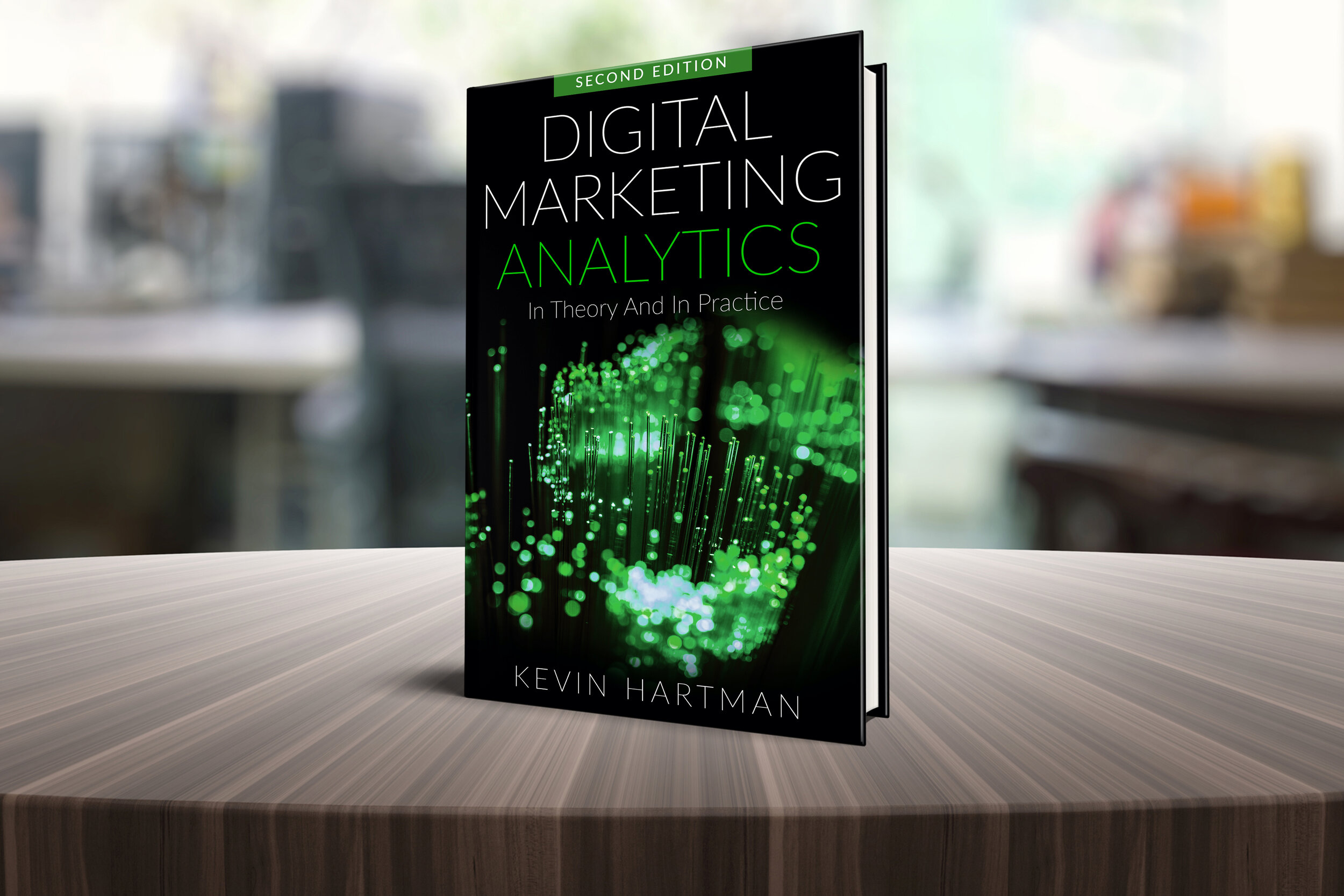
“Kevin has made science accessible. [T]his book will allow you to unlock new ways to deepen customer relationships and fatten your profits!”
An essential guide for anyone seeking to collect, analyze, and visualize data in today's digital world
WHAT’S IN THE BOOK
Even if you know nothing about digital marketing analytics, digital marketing analytics knows plenty about you. It’s a fundamental, inescapable, and permanent cornerstone of modern business that affects the lives of analytics professionals and consumers in equal measure. This five-part book is an attempt to provide the context, perspective, and information needed to make analytics accessible to people who understand its reach and relevance and want to learn more.
PART 1: The Day the Geeks Took Over
The ubiquity of data analytics today isn’t just a product of the past half-century’s transformative and revolutionary changes in commerce and technology. Humanity has been developing, analyzing, and using data for millennia. Understanding where digital marketing analytics is now and where it will be in five, 10, or 50 years requires a holistic and historical view of our relationship and interaction with data. Part 1 looks at modern analysts and analytics in the context of its distinct historical epochs, each one containing major inflection points and laying a foundation for future advancements in the ART + SCIENCE that is modern data analytics.
PART 2: Consumer/Brand Relationships
The methods that brands use to build relationships with consumers – online video, search, display ads, and social media – give analysts a wealth of data about behaviors on these platforms. Knowing how to assess successful consumer/brand relationships and understanding a consumer’s purchase journey requires a useable framework for parsing this data. In Part 2, we explore each digital channel in-depth, including a discussion of key metrics and measurements, how consumers interact with brands on each platform, and ways of organizing consumer data that enable actionable insights.
PART 3: The Science of Analytics
Part 3 focuses on understanding digital data creation, how brands use that data to measure digital marketing effectiveness, and the tools and skill sets analysts need to work effectively with data. While the contents are lightly technical, this section veers into the colloquial as we dive into multitouch attribution models, media mix models, incrementality studies, and other ways analysts conduct marketing measurement today. Part 3 also provides a useful framework for evaluating data analysis and visualization tools and explains the critical importance of digital marketing maturity to analysts and the companies for which they work.
PART 4: The Art of Analytics
Every analyst dreams of coming up with the “Big Idea” – the game-changing and previously unseen insight or approach that gives their organization a competitive advantage and their career a huge boost. But dreaming won’t get you there. It requires a thoughtful and disciplined approach to analysis projects. In this part of the book, I detail the four elements of the Marketing Analytics Process (MAP): plan, collect, analyze, report. Part 4 also explains the role of the analyst, the six mutually exclusive and collectively exhaustive (“MECE”) marketing objectives, how to find context and patterns in collected data, and how to avoid the pitfalls of bias.
PART 5: Storytelling with Data
In Part 5, we dive headlong into the most important aspect of digital marketing analytics: transforming the data the analyst compiled into a comprehensive, coherent, and meaningful report. I outline the key characteristics of good visuals and the minutiae of chart design and provide a five-step process for analysts to follow when they’re on their feet and presenting to an audience. The goal is to equip analysts with the tools they need to tell a compelling and memorable story that “cuts through the noise” of the overwhelming amount of information audiences experience every day.

WHAT PEOPLE ARE SAYING
“Kevin has made science accessible. With the immense potential Digital holds, I’m confident this book will allow you to unlock new ways to deepen customer relationships and fatten your profits!”
Avinash Kaushik Digital Marketing Evangelist - Google, Author - ‘Web Analytics: An Hour A Day’ and ‘Web Analytics 2.0’
“Kevin combines the experience of a skilled analytics practitioner with the expertise of an academic. In this book, he presents a fresh look at the field through the lens of history: from its earliest beginnings to its modern incarnation.”
Mike Chapple Director, M.S. in Business Analytics - Mendoza College of Business, The University of Notre Dame
“Digital Marketing Analytics is an important resource for all marketers, whether you are early in your career and learning or a seasoned practitioner who wants to remain sharp. This book will help you understand the changing dynamics and apply that thinking to maximize your business results.”
Karen Sauder Vice President - Google
“This book is an excellent examination of data analytics, providing both a solid theoretical foundation and a deep dive into practical application. Readers of all levels of digital savvy will benefit from Kevin’s expertise across platforms, tools, and approaches.”
W. Brooke Elliott Associate Dean and EY Professor - Gies College of Business, University of Illinois
“The power of Digital Marketing Analytics is that it provides an insightful approach to the art of analytics while demystifying its science. Whether you’re a big brand or small company, Kevin’s book is a fantastic resource for any marketer who wants to do more with data.”
Mike Clarke Director, Research - Facebook
“Kevin has honed wisdom gathered over decades as a practitioner and lecturer to develop a strong foundation of analytics. As the evolution of marketing analytics continues to accelerate, this foundation will prepare you to successfully tackle any new challenge, approach, or data source you will encounter throughout your career!”
Stan Balanovskiy, Head of Ads Measurement and Insights - Quibi
ABOUT THE AUTHOR
As Director of Analytics at Google, Kevin and his team partner with major advertisers, creative agencies, and media companies to develop digital solutions that build businesses and brands. His approach mixes science and art to deliver inventive, fact-based strategies that reduce uncertainty and increase effectiveness in the marketing and advertising programs they create.
The contents of this book reflect Kevin's decades of work in the digital analytics space, with most of that time spent leading large analytics teams at a major global advertising agency and Google. He has also had the privilege of teaching analytics at the graduate level for nearly 10 years at The University of Chicago, The University of Notre Dame, and The University of Illinois. This textbook represents the synthesis of those two worlds: the academic and the actionable, the history and the hands-on, and the analysis and the application.





